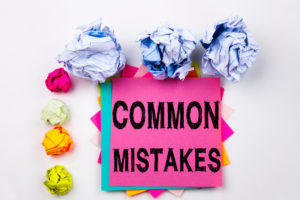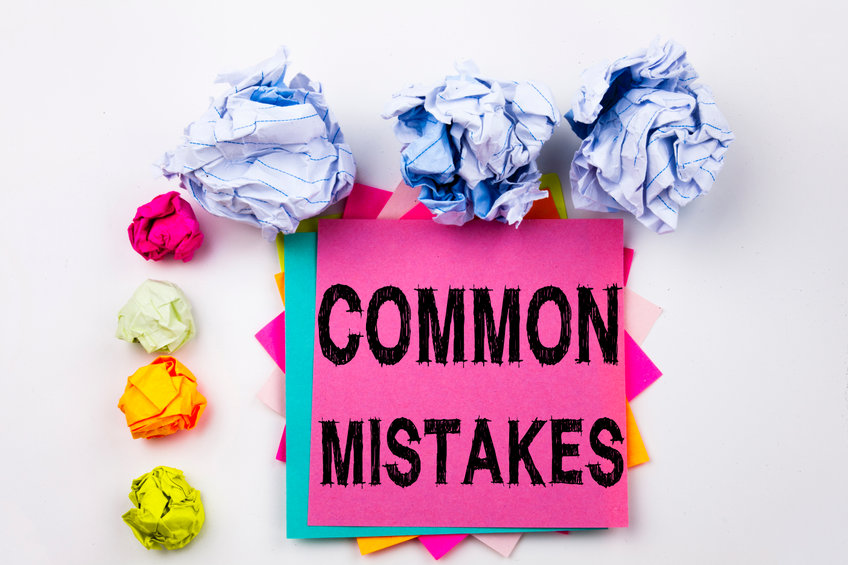
Whether an important email, sales proposal, bylined article or video script, developing content is a universal need. Even with tools such as spell check, a Thesaurus or supportive artificial intelligence (AI), quality writing can be difficult to produce. The way a brand communicates with the written word can have a significant impact on brand reputation, the success of marketing goals and professional interactions. Knowing how to write effectively is essential, yet many professionals make common writing mistakes that can hinder the quality of the content they develop. Whether it’s a lack of clarity, persuasiveness, logical flow, overuse of jargon or off-brand tone, mistakes can lead to a muddled brand image, misunderstandings or unrealized business growth.
Six Common Writing Mistakes to Avoid
Understanding common writing mistakes and overcoming them are essential for professionals in any field. Below are six writing mistakes professionals can make and tips on how to overcome them.
Mistake #1: Not knowing your audience.
A message that resonates with your target audience is essential for any kind of marketing content. Whether you are creating content for a report, email, proposal, article, video, or social media post, understanding your audience is the only way to craft a message that resonates with them. After all, if you don’t know who you’re talking to, how will you know what you want to say? This is true of internal communications as much as external communications. The way you write to a colleague will look different than the style you use when communicating with an executive.
The same is true of customers at different stages of the buyer’s journey or from different industries. Asking questions about their demographics, interests, preferred communication channels and pain points can help you create a voice that speaks directly to their needs. It’s not just a commitment of the marketing team, but an active and ongoing practice across any professional communication throughout the organization.
Mistake #2: Focusing on quantity over quality.
This can apply both in terms of how much information is crammed into a specific piece of content as well as the frequency with which you communicate. Especially in our digitally driven world, we’re used to receiving constant communication, 24/7. With so much noise, it can be easy to assume that frequently communicating is the only way to keep up. In fact, the opposite is true. Google prioritizes longer content in search, and social media algorithms act similarly. But while a longer piece of content may be preferred over several small bites, it’s important to prioritize quality.
“Is longer content inherently higher quality than shorter content? Not necessarily,” writes Shelley Kelber of Aspiration Marketing. “It may look that way because the longer content tends to solve the immediate problems of users better. Google wants content that best serves searchers to be at the top of the SERPs. Simply creating as many posts as you cannot yield long-term benefits.” At the end of the day, it’s all balancing quality communications with a frequency that makes an impact.
Mistake #3: Not using writing best practices.
Bad grammar and poor mechanics lead to miscommunication, misunderstandings and poor perception of the writer.
Here are a few examples:
- Run-on sentences. Long, convoluted sentences can be difficult to read and hard for the reader to understand. Poor readability and long sentences can also negatively affect SEO. Also, concise sentences are more impactful and create urgency. A good rule of thumb is to keep sentences to 20 words or less. The easiest way to correct this error is to break each idea into its own sentence. Look for redundant or extra words that can be eliminated. For example, writers can often shorten “In order to” to simply “To.”
- Technical jargon. Most industries have their specific jargon, terminology and acronyms, especially in B2B sectors. While technical terms have a vital purpose, using them in the wrong context can lead to confusion, especially when communicating across different industries, communities or roles. Again, this is true of both internal and external communications. Additionally, the overuse of technical language can make it difficult for audiences to understand or engage with your message.
- Subject-verb agreement. Perhaps the most glaring example of bad grammar is when the subject of a sentence and the verb don’t agree in number, tense or mood. For example, “One of the board members prefer to meet virtually.” Because the subject of the sentence is singular, the correct agreement would be, “One of the board members prefers to meet virtually.”
- Shifting tense. This occurs when tense changes within the same sentence, paragraph or piece of content. For example, “My son and I had a great day in the park, and we will play catch.” The first part of the sentence uses past tense and the second part uses future tense. This can be corrected in two ways. Either make the sentence past tense (My son and I had a great day in the park, where we played catch) or future tense (My son and I will have a great day in the park tomorrow when we will play catch).
- Use of passive voice. When a sentence is written in passive voice the subject of a sentence receives the action of the verb rather than performing the action. For example, “The report was sent to human resources by the CEO.” If the sentence was written in active voice, it would read, “The CEO sent the report to human resources.” Active voice also helps establish a sense of accountability, making it clear who is responsible for the action being taken. While passive voice is not necessarily incorrect grammar, it can make your writing sound weak, indirect and even confusing. Passive voice often buries who is doing the action. Passive voice makes it difficult for readers to understand the action being taken and who is responsible for it.
Mistake #4: Lack of a navigable design.
It’s easy to underestimate the importance of bullet points, numbering, headers and white space. That said, these are the tools readers use to visually navigate a piece of text. Without an attractive and engaging design that helps readers find the content they need, they will head elsewhere for their information. This can be as simple as ensuring the website text is clear and readable or as complex as offering an interactive visual e-book experience. For short-form content, keep the busyness to a minimum so readers can get what they need quickly, propelling them through the sales funnel. For long-form content such as articles, eBooks or white papers, consider using a linkable table of contents and plenty of graphics to break up text.
Mistake #5: Inappropriate or lack of relevant visuals.
Research proves that including visuals such as images, charts and graphs enhance the overall impact of written content. That said, it’s important to ensure that visual elements are relevant to the message you are trying to convey. Including visuals simply for the sake of having them can be distracting and even confusing to readers, especially if they don’t relate to the content. The purpose of visuals is to illustrate your point, not detract from it. This can be as simple as using a stock image or as in-depth as creating a customized infographic or data visualization chart. Vary when and where you’re using visuals to increase their impact.
For example, Vickie Sullivan discusses the power of a well-positioned infographic to invite a reader to download a longer report. “This tactic works because it paves the way for more engagement,” she says. “If readers want to dive in…the full report is easily assessable. And by allowing folks to self-select, the company that created the report gets more qualified leads from the report’s link.” Carefully consider the relevance of any visuals you include and position them in a way that adds value and enhances the overall message of your writing.
Mistake #6: Relying exclusively on technology for editing.
While new grammar applications and AI tools are becoming more prevalent for editing and ideation, it’s vital that professionals don’t rely singularly on these tools. Editing isn’t just about spelling and the correct placement of commas. Quality editing accounts for style, brand, tone, audience, medium, publication and platform. Naturally, a casual message on an internal communication platform has a different context than an in-depth, expert article in a trade magazine. They require different approaches that reflect a specific tone, connect with a different reader and convey a different message. It’s important not to rely on AI or computer applications exclusively to connect with audiences in specific B2B contexts. Leverage the knowledge of other experts, writers and editors to ensure your messaging is clear, brand-aligned, and possesses a style and tone appropriate to the audience and publication.
Make Quality Communications a Priority

By the time this blog post is complete, it will have undergone several rounds of reading, editing, proofreading and tweaking. It’s all done for the sake of clarity, accuracy and quality. The written word is still a vital pillar of our daily communications, whether personal or professional, digital, print or in person. Effective communication, especially when it comes to marketing content, has the power to enhance brand image, build a loyal following and meet critical organizational objectives.

